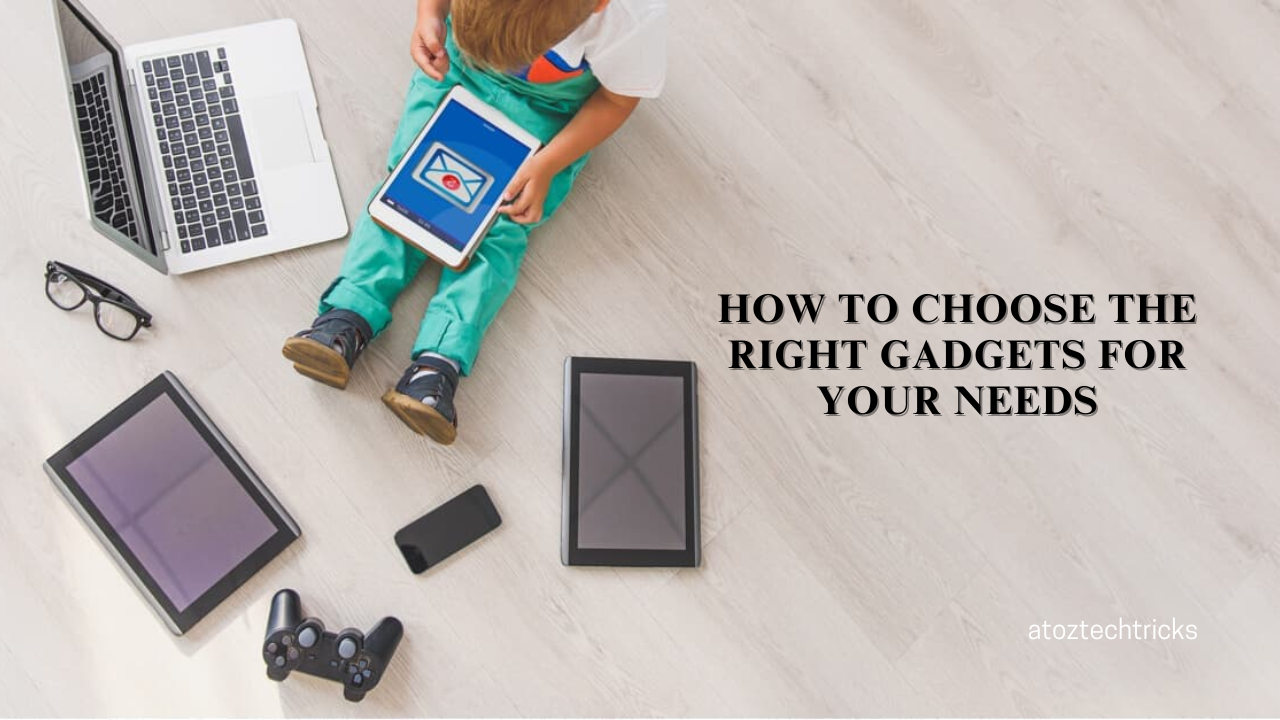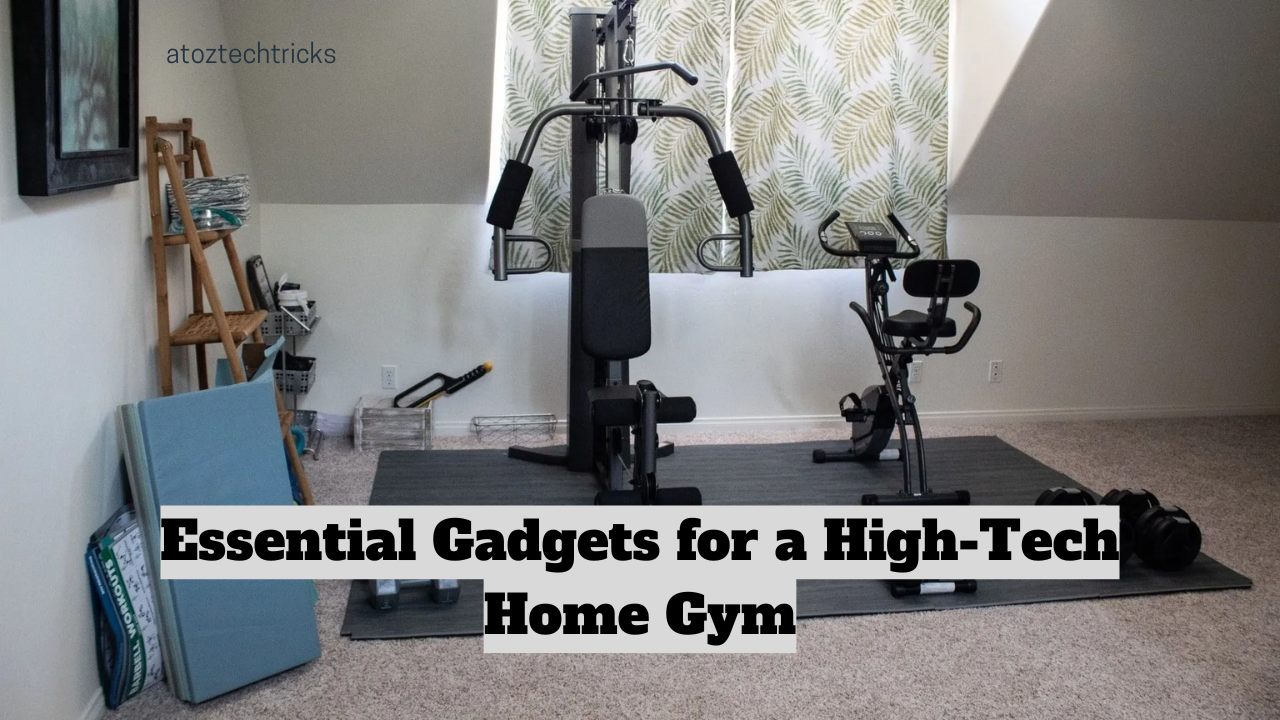In today’s rapidly evolving tech landscape, choosing the right gadget can feel overwhelming. With endless options available, each with its own set of features, specifications, and price points, making an informed decision is crucial. Whether you’re looking for a new smartphone, a smartwatch, a laptop, or any other type of gadget, understanding your needs and the features that matter most can help you make the best choice.
1. Identify Your Needs
a. Define Your Purpose
Before diving into the technical details, it’s essential to pinpoint what you want from the gadget. Are you looking for a device primarily for productivity, entertainment, or communication? For instance, if you need a laptop for high-end video editing, your requirements will differ significantly from someone who needs a laptop for word processing and browsing.
b. Consider Your Lifestyle
Your lifestyle plays a significant role in determining which gadget is right for you. A frequent traveller might need a lightweight, durable device with a long battery life, while someone who works from home might prioritize a larger screen and more powerful hardware. Think about how you will use the gadget daily and what features would enhance your experience.
c. Budget Constraints
Establishing a budget is crucial. Gadgets range from budget-friendly options to high-end models with premium features. Knowing how much you’re willing to spend will help narrow down your choices and prevent you from being swayed by features you don’t need.
2. Research and Compare Options
a. Read Reviews
Once you’ve identified your needs and budget, start researching available options. Reading reviews from credible sources and users can provide valuable insights into the performance, reliability, and overall satisfaction with a gadget. Look for reviews that highlight both the pros and cons of each option to get a balanced perspective.
b. Compare Specifications
Understanding the specifications of different gadgets is key to making an informed decision. For instance, if you’re considering a new smartphone, compare processor speeds, camera quality, battery life, and storage capacity. For laptops, look at the processor type, RAM, storage, display resolution, and graphics capabilities.
c. Check for Compatibility
Ensure that the gadget you choose is compatible with your existing devices and software. For example, if you’re purchasing a new smartwatch, check if it’s compatible with your smartphone’s operating system. Compatibility issues can lead to additional expenses or limitations in functionality.
3. Evaluate Key Features
a. Performance
Performance is often a top priority when choosing a gadget. For smartphones and laptops, this means evaluating the processor, RAM, and storage options. A higher processor speed and more RAM generally lead to better performance, but it’s essential to balance this with your actual needs. For instance, a high-end gaming laptop requires more powerful hardware compared to a basic office laptop.
b. Battery Life
Battery life can make or break the usability of a gadget. If you’re always on the go, a device with a long battery life is crucial. Check the manufacturer’s specifications for battery life estimates and read user reviews to see how the gadget performs in real-world usage.
c. Build Quality and Design
The build quality and design of a gadget can affect its durability and comfort. Look for a gadget that is well-built and feels sturdy in your hands. For portable gadgets like smartphones and laptops, consider factors such as weight, thickness, and ergonomics. A sleek, lightweight design might be appealing, but it should also be durable enough to withstand daily use.
d. Display Quality
For devices that involve visual interaction, such as smartphones, tablets, and laptops, display quality is crucial. Evaluate the screen size, resolution, and panel type. Higher resolutions and better panel types (e.g., AMOLED vs. LCD) can enhance the visual experience, but they may also impact battery life and cost.
e. Connectivity Options
Consider the connectivity options available on the gadget. For example, a smartphone should have reliable 4G or 5G connectivity, while a laptop might benefit from multiple USB ports, HDMI, and Wi-Fi capabilities. Ensure that the gadget supports the connectivity features you need for your daily tasks.
4. Brand Reputation and Support
a. Brand Reliability
The brand of the gadget can influence its reliability and longevity. Established brands often have a track record of producing high-quality products and providing good customer support. Research the brand’s reputation, check for customer feedback, and consider how long the company has been in business.
b. Customer Support and Warranty
Good customer support and a reliable warranty can save you a lot of trouble if something goes wrong with your gadget. Check the warranty terms and the availability of customer support services. A good warranty should cover defects and offer repair or replacement options.

5. Future-Proofing Your Purchase
a. Upgrade Potential
Technology evolves rapidly, and gadgets can become outdated quickly. When choosing a gadget, consider its upgrade potential. For example, a laptop with easily replaceable components, such as RAM and storage, might be more future-proof than one with integrated components. Similarly, a smartphone with expandable storage might offer more longevity.
b. Software and Ecosystem
Consider the software and ecosystem that comes with the gadget. Some gadgets are better integrated with certain ecosystems, such as Apple’s iOS or Google’s Android. Choosing a gadget that fits well within your existing ecosystem can enhance your user experience and simplify the integration of multiple devices.
Top Gadgets for DIY Enthusiasts and Home Improvement Projects
6. Make an Informed Decision
a. Test the Gadget
Whenever possible, test the gadget before making a purchase. Visit a store or showroom to get a hands-on experience with the device. This can help you assess factors such as comfort, usability, and build quality. Testing the gadget can also help you determine if it meets your expectations and requirements.
b. Purchase from Reputable Retailers
Buy your gadget from reputable retailers or directly from the manufacturer to ensure you receive a genuine product and reliable customer service. Be cautious of deals that seem too good to be true, as they might indicate counterfeit products or scams.
c. Consider Refurbished Options
If you’re looking to save money, consider refurbished gadgets. Refurbished products are often sold at a lower price and can offer good value for money. Ensure that the refurbished gadget comes with a warranty and has been inspected and certified by the manufacturer or a reputable refurbisher.
Choosing the right gadget requires careful consideration of your needs, preferences, and budget. By identifying your requirements, researching and comparing options, evaluating key features, and considering brand reputation and future-proofing, you can make an informed decision that aligns with your needs and enhances your daily life.

In a world where technology continues to advance, taking the time to select the right gadget can provide long-term benefits and satisfaction. Remember that the best gadget is one that not only meets your immediate needs but also fits seamlessly into your lifestyle and evolves with your changing requirements.
Whether you’re upgrading your current device or investing in a new gadget, making a well-informed choice will ensure that you get the most value and enjoyment from your purchase.
Gadgets for Outdoor Adventures: Essential Tech for Nature Lovers



